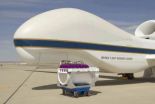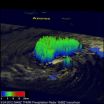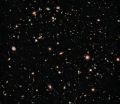(Press-News.org) Tampa, Fla. (Sep. 25, 2012) – In a study to determine the best cryopreservation (freezing) solution to maintain induced pluripotent stem (iPS) cells, a team of researchers from Japan compared 12 kinds of commercially prepared and readily available cryopreservation solutions and found that "Cell Banker 3" out-performed the other 11 solutions by allowing iPS cells to be preserved for a year at degrees C in an undifferentiated state.
The study is published in a recent special issue of Cell Medicine [3(1)], now freely available on-line at: http://www.ingentaconnect.com/content/cog/cm.
"iPS cells are a promising alternative to embryonic stem cells and can be used in place of bone marrow cells, stromal cells and adipose tissue-derived stem cells," said study co-author Hirofumi Noguchi, MD, PhD, Department of Gastroenterological Surgery, Transplant and Surgical Oncology at the Okayama University Graduate School of Medicine. "However, the viability of human iPS cells, like embryonic stem cells, decreases significantly during cryopreservation. A wide variety of cryopreservation solutions have been used, however many are toxic or ineffective for use in extended cryopreservation."
The researchers concluded that Cell Banker 3 showed the highest cell viability and proliferation of all the solutions examined and can be widely used as it does not require any special skills for use.
###
This research was among those studies presented at the 37th Annual Meeting of the Japan Society for Organ Preservation and Medical Biology (JSOPMB). Sixteen studies were published in this special issue of CELL MEDICINE. The theme of the issue is "Organ/Cell Transplantation and Regenerative Medicine."
Citation: Miyamoto, Y.; Noguchi, H.; Yukawa, H.; Oishi, K.; Matsushita, K.; Iwata, H.; Hayashi, S. Cryopreservation of Induced Pluripotent Stem Cells. Cell Med. 3(1):89-95; 2012.
Contact: Dr. Hirofumi Noguchi, Department of Gastroenterological Surgery, Transplant and Surgical Oncology, Okayama University Graduate School of Medicine, Dentistry and Pharmaceutical Sciences, 2-5-1 Shikata, Okayama 700-8558 Japan
Tel + 81-86-235-7257; Fax + 81-86-221-8775
Noguchih2006@yahoo.co.jp / noguch-h@cc.okayama-u.ac.jp
The editorial offices for CELL MEDICINE are at the Center of Excellence for Aging and Brain Repair, College of Medicine, the University of South Florida. Contact, David Eve, PhD. at cellmedicinect@gmail.com
News Release by Florida Science Communications
Cryopreservation of induced pluripotent stem cells improved the most by one product
2012-09-26
ELSE PRESS RELEASES FROM THIS DATE:
Cutting-edge technology makes NASA's hurricane mission a reality
2012-09-26
Cutting-edge NASA technology has made this year's NASA Hurricane mission a reality. NASA and other scientists are currently flying a suite of state-of-the-art, autonomously operated instruments that are gathering difficult-to-obtain measurements of wind speeds, precipitation, and cloud structures in and around tropical storms.
"Making these measurements possible is the platform on which the instruments are flying," said Paul Newman, the deputy principal investigator of NASA's Hurricane and Severe Storm Sentinel (HS3), managed by NASA's Goddard Space Flight Center in Greenbelt, ...
October LITHOSPHERE delivered online
2012-09-26
Boulder, Colo., USA – The October issue of Lithosphere covers geology in Wyoming, USA; the California Coast Ranges, USA; the Alpine Fault, New Zealand; the South Atlantic seafloor; the central Himalaya in Nepal; and Sidekan, Kurdistan Region, Iraqi Zagros suture zone. Topics and methods include tectonics, orogeny, hazards, paleogeography, trigonometrics, multiple-point data analysis, LiDAR, oceanic isostasy, computer modeling, and spectroscopy.
Abstracts are online at http://lithosphere.gsapubs.org/content/current. Representatives of the media may obtain complimentary ...
NASA satellites see Tropical Storm Nadine 'refuse to go away'
2012-09-26
Nearly two weeks after becoming a tropical storm in the central Atlantic back on September 11th, NASA satellites confirm that Nadine is still spinning away south of the Azores as a minimal tropical storm. One of those satellites called TRMM has been providing forecasters with rainfall rates and cloud heights.
Nadine initially formed into a tropical depression from an African easterly wave that had propagated westward out into the central Atlantic from the coast of Africa. Nadine initially moved northwestward then northward before getting caught up in the westerlies over ...
Mouse pancreatic stem cells successfully differentiate into insulin producing cells
2012-09-26
Tampa, Fla. (Sep. 25, 2012) – In a study to investigate how transplanted islet cells can differentiate and mature into insulin-producing pancreatic cells, a team of Japanese researchers found that using a specific set of transcription factors (proteins that bind to specific DNA sequences) could be transduced into mouse pancreatic stem cells (mPSCs) using Sendai virus (SeV), a mouse influenza virus, as a carrier, or vector.
The study is published in a recent issue of Cell Medicine [3(1)], now freely available on-line at: http://www.ingentaconnect.com/content/cog/cm.
"Diabetes ...
NASA infrared data compares Super Typhoon Jelawat with Tropical Storm Ewiniar
2012-09-26
NASA's Aqua satellite has been obtaining infrared, visible and other data everytime it passes over Typhoon Jelawat and Tropical Storm Ewiniar in the western North Pacific, and a combination of two images from Aqua's AIRS satellite puts the storms in perspective.
A combined image created from infrared data obtained by the Atmospheric Infrared Sounder (AIRS) instrument that flies on NASA's Aqua satellite provides a comparison of the two monster storms in the western North Pacific Ocean basin . An infrared image of Typhoon Jelawat captured on Sept. 25 was combined with an ...
Category 2 Hurricane Miriam Seen in East Pacific by NASA satellite
2012-09-26
The MODIS instrument that flies aboard NASA's Aqua and Terra satellites provide some of the most clear and stunning imagery of tropical cyclones, and captured a visible image of Category 2 hurricane Miriam off the western coast of Mexico.
MODIS stands for the Moderate Resolution Imaging Spectroradiometer. Terra's MODIS and Aqua's MODIS view the entire Earth's surface every 1 to 2 days, acquiring data in 36 spectral bands, or groups of wavelengths. NASA's Aqua satellite flew over Hurricane Miriam on Sept. 24 at 21:00 UTC and the MODIS instrument captured a visible image ...
Hubble goes to the eXtreme to assemble farthest-ever view of the universe
2012-09-26
Like photographers assembling a portfolio of best shots, astronomers have assembled a new, improved portrait of mankind's deepest-ever view of the universe.
Called the eXtreme Deep Field, or XDF, the photo was assembled by combining 10 years of NASA Hubble Space Telescope photographs taken of a patch of sky at the center of the original Hubble Ultra Deep Field. The XDF is a small fraction of the angular diameter of the full moon.
The Hubble Ultra Deep Field is an image of a small area of space in the constellation Fornax, created using Hubble Space Telescope data from ...
Lunar Reconnaissance Orbiter explores the Moon in 3-D
2012-09-26
Scientists using the camera aboard NASA's Lunar Reconnaissance Orbiter are acquiring stereo images of the moon in high resolution (0.5 to 2 meters/pixel) that provide 3-D views of the surface from which high resolution topographic maps are made. The Lunar Reconnaissance Orbiter Camera Narrow Angle Camera (LROC NAC) team from the University of Arizona and Arizona State University are currently developing a processing system to automatically generate anaglyphs from most of these stereo pairs. An anaglyph is an image that can be viewed in 3-D using red-blue/green glasses.
LROC ...
Compelling evidence that brain parts evolve independently
2012-09-26
An Evolutionary Biologist at The University of Manchester, working with scientists in the United States, has found compelling evidence that parts of the brain can evolve independently from each other. It's hoped the findings will significantly advance our understanding of the brain.
The unique 15 year study with researchers at the University of Tennessee and Harvard Medical School also identified several genetic loci that control the size of different brain parts.
The aim of the research was to find out if different parts of the brain can respond independently of each ...
Inner city infants have different patterns of viral respiratory illness than infants in the suburbs
2012-09-26
Children living in low-income urban areas appear especially prone to developing asthma, possibly related to infections they acquire early in life. In a new study in The Journal of Infectious Diseases, available online, researchers from the University of Wisconsin in Madison investigated viral respiratory illnesses and their possible role in the development of asthma in urban versus suburban babies. The differences in viral illness patterns they found provide insights that could help guide the development of new asthma treatments in children.
Viral respiratory illnesses ...




